Nestled along the rugged Yorkshire coastline lies Bempton Cliffs, an RSPB Nature Reserve that embodies raw, untamed beauty and a sanctuary for some of the UK’s most remarkable seabirds. It was an early start for us, leaving long before sunrise for a four-hour drive that brought us to this wildlife haven by 9 a.m. While the hours on the road seemed daunting, the anticipation of capturing the Puffins, Gannets, Kittiwakes, and Guillemots made the morning electric with excitement. What awaited us on the cliffs was nothing short of extraordinary.
A Walk Through the Bempton Cliffs Trails
We began our adventure at the Mosey Downgate viewpoint, where the morning light seemed to breathe life into the expansive cliffs ahead. Bempton’s trails snake along dramatic precipices, offering jaw-dropping views at every turn. From there, we wandered to Bartlett Nab, Jubilee Corner, then back to New Roll-up, and Stanple Newk, each viewpoint giving us unique perspectives on the clifftop drama unfolding above the North Sea.
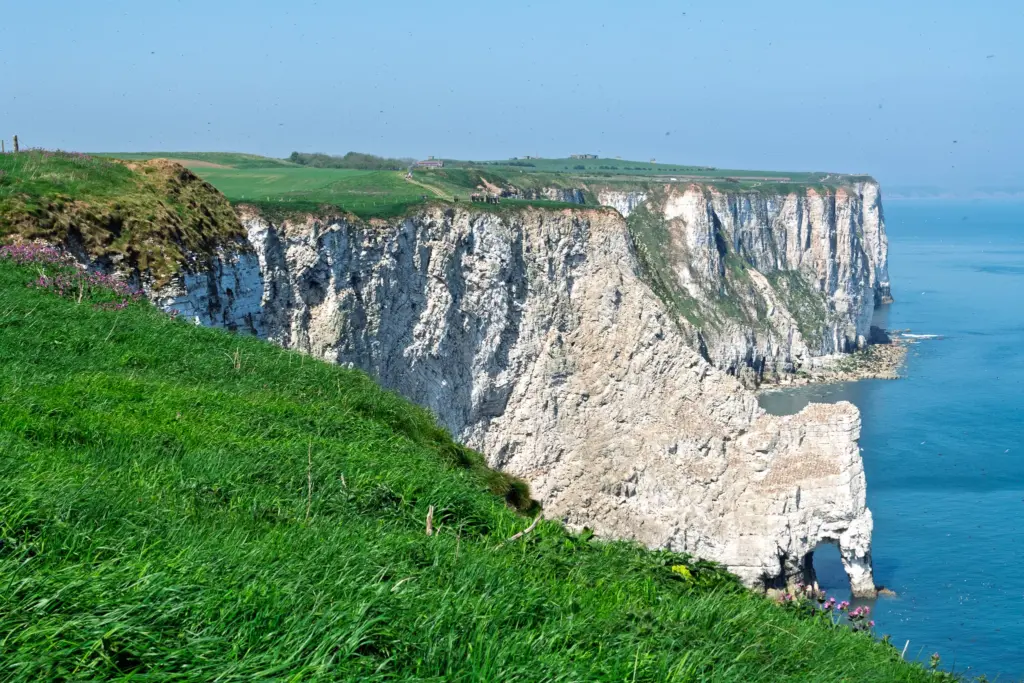
The air was alive with energy, filled with the cries of seabirds wheeling high above, their voices echoing against the tall white chalk cliffs. My camera was slung over my shoulder, ready to immortalize every moment in pixels. Each viewpoint presented its challenges, from the constantly shifting coastal light to the movement of hundreds of birds sweeping through the sky.
Close Encounter with the Gannets
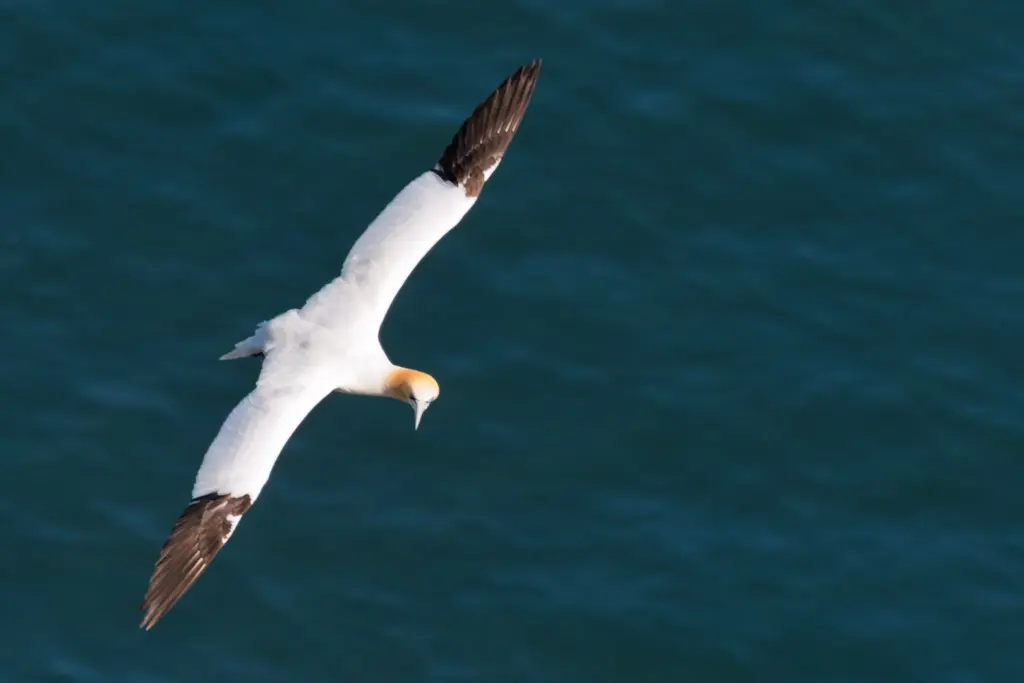
It didn’t take long to spot the first stars of the day. A graceful Northern Gannet soared into view, silhouetted against the infinite blue of ocean and sky. Photographing this proud flier at Jubilee Corner was a delightful challenge. Using a fast shutter speed of 1/1250, I froze its mid-air elegance, capturing the stark contrast between its white wings, golden head, and the background of restless waves. The bright sunlight reflected off the gannet’s plumage produced a natural glow, highlighting its beauty. My camera was set to an aperture of f/9, striking the perfect balance between focus on the bird and a softly blurred background that accentuated its flight.
The gannets dominated the scene in remarkable numbers, their unmistakable dark wingtips slicing through the breeze. For wide-angle shots, Auto ISO set itself up at 500 for better clarity, as it was still early in the morning, capturing. Sweeping frames of the chalk cliffs are adorned with dramatic strings of these birds perched with precision on the jutting ledges.
The Cliffside Drama of Guillemots and Razorbills
Between Bartlett Nab and Jubilee Corner, the rocky outcrops seemed to transform into amphitheaters for the nesting guillemots and kittiwakes. Here, I adjusted my lens to 280mm to zoom into the chaos of birdlife. Razorbills, with their sleek black and white feathers, clung to the narrowest ledges with unwavering determination. Capturing them involved using a high-speed burst mode to catch fleeting details of their behavior mid-motion.
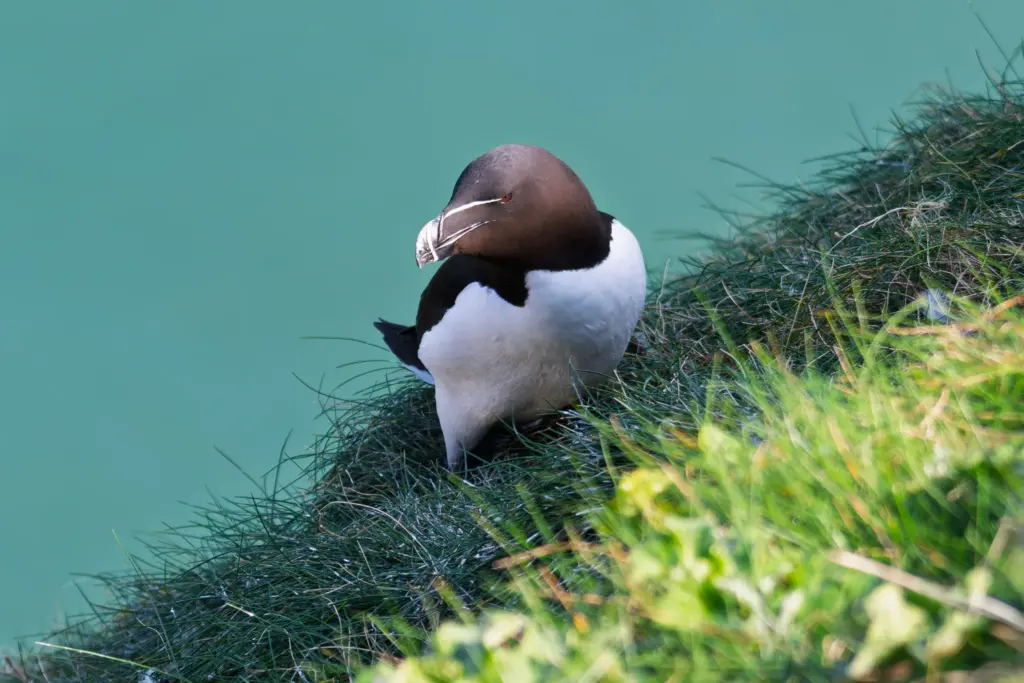
The soft morning sun poured over the cliffs, creating a play of highlights and shadows that was irresistible to the lens. I used spot metering to expose details of their plumage without overblowing the stunning whites of the birds or the chalk cliffs.
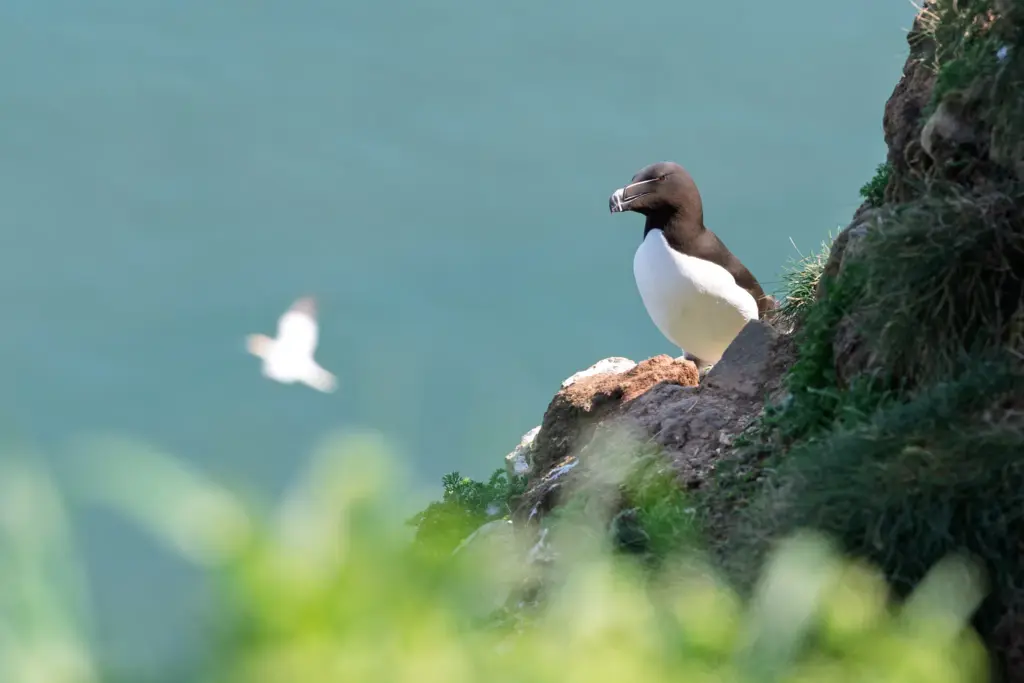
The Search for the Puffin
Bempton Cliffs is renowned for its charming Puffins, but these elusive little birds aren’t always easy to spot. Knowing their preference for grassy cliffs and burrow-like crevices, we kept an eye out as we circled back to Mosey Downgate and Bartlett Nab on our return walk. Finally, in a quiet pocket near Bartlett Nab, there it was.
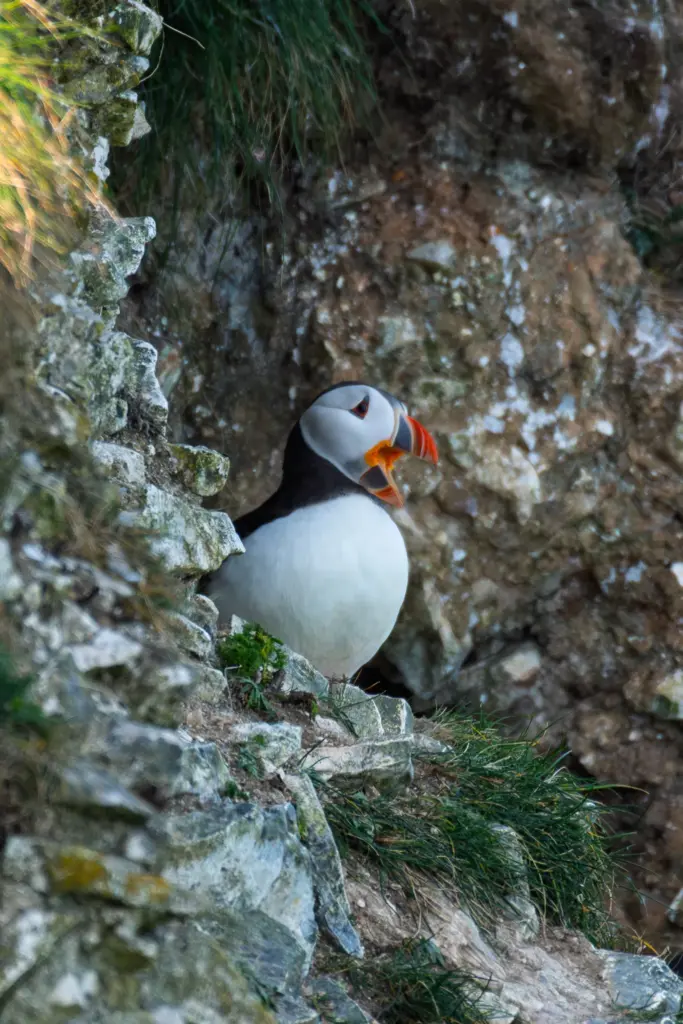
The Puffin, perched on the edge of the slope, was a jewel-like splash of color against the muted palette of rock and grass. I carefully focused my lens, framing the bird slightly off-center following the rule of thirds, allowing the rocky cliff face in the background to lend depth to the shot. The light at this point had softened, diffused slightly by the occasional passing cloud, casting a gentle hue over the scene. Shooting at the range topping 650mm at f/8, I captured the vibrant orange of its beak and the expressive gleam in its eye, using a 1/1250s shutter speed to counteract any movement in the coastal breeze. Sadly, a crow disrupted the serene moment, swooping in and sending the Puffin into flight—but even in this brief encounter, it was impossible not to be mesmerized.
Reflections on an Unforgettable Day at Bempton Cliffs
Photography at Bempton Cliffs is an intimate dance between patience and precision. The reserve offers endless opportunities to experiment with composition, lighting, and timing. Each species, from the majestic gannets to the endearing Puffins, presents its own set of challenges and rewards, teaching a deeper appreciation for the art of wildlife photography.
While the birds are undeniably the stars, the surrounding landscapes evoke a quiet grandeur that demands attention. The white chalk cliffs, scored by time and weather, stand like sentinels over the thrumming sea below. Textures of grass, occasional bursts of wildflowers, and the glittering blue water create a painter’s palette of colors.
As we packed up our cameras and walked back to the car, tired but elated, there was already talk of a return trip. Bempton Cliffs is the kind of place that leaves its mark long after you’ve left. For any photographer or bird enthusiast, it’s not merely a location but an inspiration, a reminder of the beauty that exists when nature is left to flourish. If you’ve not yet visited, I can only encourage you to grab your gear, clear some space on your memory card, and head out. The cliffs are waiting.
Bempton Cliffs is an RSPB site, and is free for members to visit, but a fee is charged for non-members. For more details, visit https://www.rspb.org.uk/days-out/reserves/bempton-cliffs.

